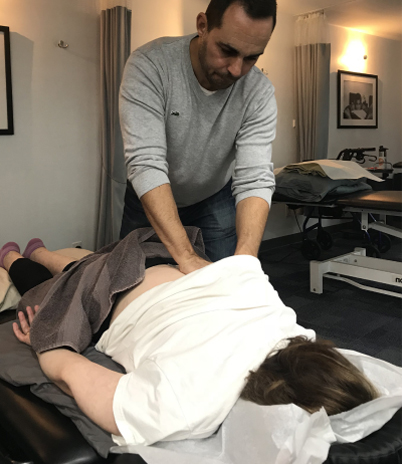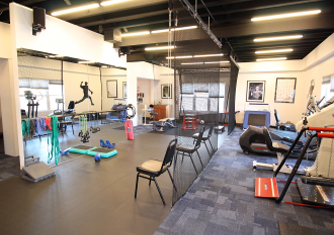Running analysis in physical therapy is a specialized evaluation process that involves assessing an individual’s running gait, form, and biomechanics to identify any abnormalities or inefficiencies that may contribute to pain, injuries, or performance issues. By analyzing how a person runs, physical therapists can gain insights into their movement patterns, muscle imbalances, joint alignment, and overall running mechanics.
During a running analysis session, a physical therapist may use various tools and techniques to evaluate the individual’s running technique, such as video recording, motion analysis software, pressure sensors, and treadmill assessments. The therapist will observe factors like foot strike pattern, stride length, cadence, hip and knee alignment, arm swing, and trunk position to identify any deviations from optimal running mechanics.
The goal of running analysis in physical therapy is to pinpoint areas of weakness, instability, or inefficiency in the individual’s running form and mechanics. Based on the findings of the analysis, the physical therapist can develop a personalized treatment plan that may include corrective exercises, strengthening drills, stretching routines, footwear recommendations, gait retraining strategies, and other interventions to address the identified issues and improve running performance while reducing the risk of injuries.
By conducting a thorough running analysis, physical therapists can help runners of all levels – from recreational joggers to competitive athletes – optimize their running technique, prevent injuries, enhance performance, and promote long-term musculoskeletal health and well-being.
Brooklyn Body Works Physical Therapy is staffed with a professional and caring team of experts with clinical experience in Running Analysis. Browse through our physical therapist profiles to learn how they can help you with restoring functionality.
A running analysis in physical therapy offers numerous benefits to individuals looking to improve their running performance, prevent injuries, and enhance overall musculoskeletal health. By undergoing a running analysis, individuals can:
1. Identify biomechanical inefficiencies: A running analysis allows for a detailed assessment of an individual’s running gait and form, helping to identify any biomechanical issues such as overpronation, poor foot strike, or hip drop that may contribute to pain or injuries.
2. Prevent injuries: By addressing faulty movement patterns and biomechanical imbalances through a running analysis, individuals can reduce their risk of developing common running-related injuries such as shin splints, IT band syndrome, plantar fasciitis, and stress fractures.
3. Optimize running performance: Through gait analysis and personalized feedback, individuals can make targeted improvements to their running technique, stride mechanics, and muscle activation patterns, leading to enhanced running efficiency, speed, and endurance.
4. Enhance recovery from injuries: For individuals recovering from running-related injuries, a running analysis can help pinpoint movement patterns or muscle weaknesses that may have contributed to the injury, allowing for tailored rehabilitation strategies to facilitate a safe return to running.
5. Receive personalized recommendations: Based on the findings of the running analysis, physical therapists can provide personalized recommendations for corrective exercises, strength training routines, footwear selection, and gait retraining techniques to address specific issues and optimize running mechanics.
Overall, a running analysis in physical therapy offers a comprehensive approach to improving running performance, preventing injuries, and promoting long-term musculoskeletal health, making it a valuable tool for runners of all levels seeking to enhance their running experience.
Running Analysis can include techniques or exercises such as:
Brooklyn Body Works Physical Therapy began as an idea to bring the highest quality physical therapy to all people in our community. We wanted to offer the best that NYC has in health care while not marginalizing people based on socioeconomic boundaries (race, income, language, religion, etc). We offer a “concierge style service” and continue to accept many commercial insurances, medicare and even medicaid policies.



Since this is a physical therapy session which will require a physical examination and therapeutic exercise (varies by patient), we ask all our patients to come prepared. Please come dressed in loose fitted clothing that will allow for easy mobility, comfort, and access to the area of complaint. In addition we recommend sneakers with soles that grip to prevent slips or falls.
The need for a referral depends on what type of insurance you have. Most insurance plans do not require one, however some insurances do. For example, if you have HIP, you will need a referral from your primary care physician. We ask that you check to see what your health insurance plan requires prior to your initial visit. If you are unsure, please contact our front office and we’ll do our best to determine whether or not you require a referral.
To get in contact with us, click on the following link to view information pertaining to each office.
Each patients case and diagnosis is unique and requires the development of an individualized plan of care. Your physical therapist will give you an estimate of the number of sessions needed to reach a level of “feeling better”, during your initial evaluation.
Over time the number of visits may increase or decrease from the initial estimate, based on the progress made.
Brooklyn Body Works Physical Therapy accepts many of the available major insurance plans as well as alternate payment options, including cash/self-pay, to make our services accessible and affordable. Please visit the link below to view all information pertaining to Payment Options.